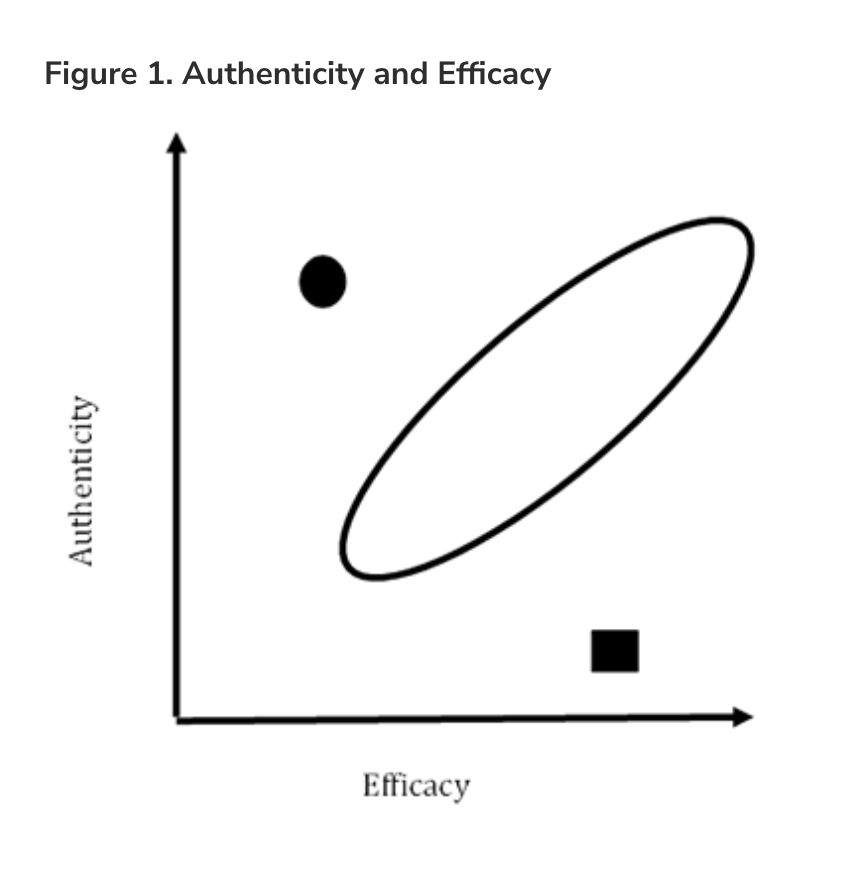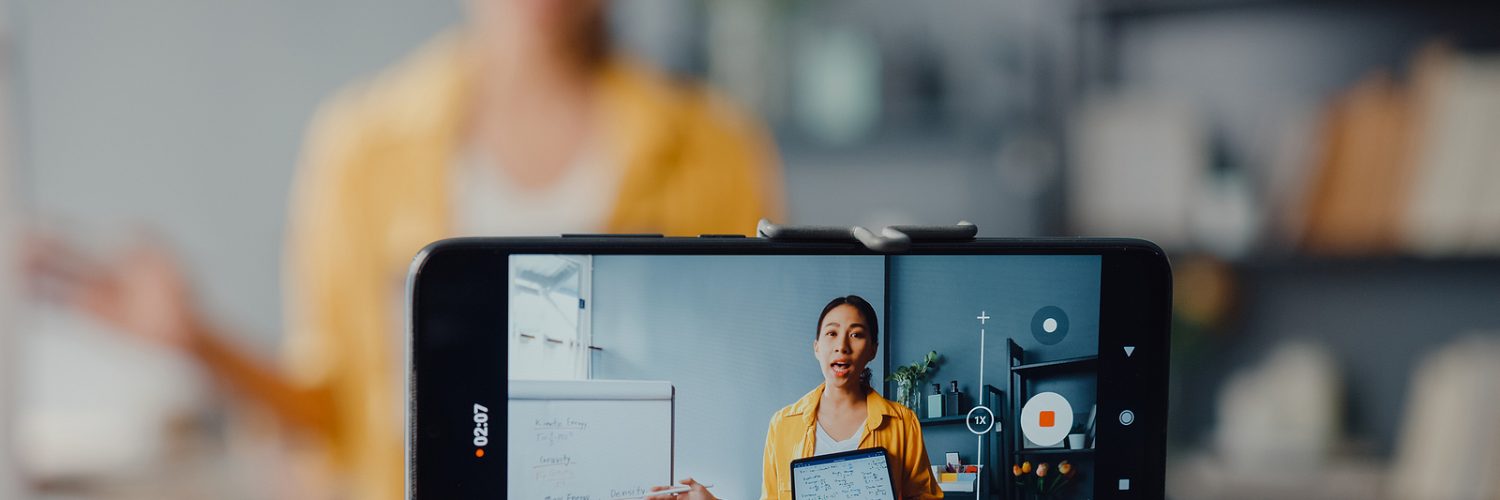Video for learning has gotten a bad rap lately, but thoughtful changes and a better understanding of the subtleties of online learning can help instructional video rehab its image.
After a year of emergency remote teaching, learners may feel like they never want to watch another recorded video lecture. “Get us back to in-person learning” is an entirely understandable battle cry for students and educators alike. Administrators might be hesitant to invest time and resources into educational video amid the many negative headlines around learning at a distance.1 However, few could deny the benefits discovered during this prolonged season of virtual teaching, learning, and working.
Given that the current climate continues to demand more and better online learning, we would be wise to hear from the research community that began asking questions long before the global pandemic.2 What do we already know about the use of video in educational environments, and how can we apply these lessons today when they are needed more than ever?
What We Know about the Effectiveness of Instructional Video
In February 2021, a group of researchers published a systematic review of literature from the past decade.3 Their research question was this:
What are the learning effects of swapping other content (text or live lecture) for videos, and what are the learning effects of adding videos to existing course materials?
The researchers cast their net around five databases to find only the studies that used randomized designs with causal inferences. Studies were analyzed through a variety of selection criteria. For example, studies involving synchronous interaction were excluded; research subjects had to be enrolled in higher education; and the studies selected had to report on a measure of learning or achievement. Finally, researchers included comparisons of video teaching against all other types of teaching, primarily readings or face-to-face lectures. PRISMA (preferred reporting items for systematic reviews and meta-analysis) was used as a framework, and their process of elimination yielded 105 studies from which to draw conclusions.
Across these 105 studies, several variables did not impact student learning:
- A student’s geographic region
- The subject being studied
- The type of course (broad versus narrow)
- The timing of the assessment after the video
- The number of minutes of video instruction in the course
- The specific kind of video (lecture versus case study)
To be considered effective, the intervention needed to have a positive impact on student achievement to a degree that was at least equivalent to the non-intervention setting. The researchers found the following results to be consistent:
- Using video to replace static media (text) is more effective than video that replaces a teacher, although video that replaces a live lecture is also effective, just to a lesser degree.
- Video recorded lectures are more effective than audio-only recorded lectures.
- When comparing the effectiveness of video for acquiring skills versus knowledge, video is ideal for teaching skills and has a smaller impact on knowledge acquisition.
- A highly effective instructional strategy is to incorporate co-viewing of video with a peer. Large positive effects are seen when videos are presented in a collaborative context.
- Providing video as a supplement to other instruction (text materials, lecture, etc.) is never a bad idea. Strong significant positive effects exist for providing students with supplemental video instruction, a finding that affirms the Universal Design for Learning framework’s emphasis on offering multiple means of representation.
The researchers challenge current assumptions and provide the impetus to keep experimenting with instructional video. They conclude:
As universities move toward online learning through videos, some academics may fear that students will perform less well compared with their peers who receive traditional methods. Other things being equal, our review shows student results are unlikely to decline when using video for teaching. We identified more than 100 randomized trials that had used video in higher education, and on average, videos led to better learning outcomes compared with other methods. In the 83 studies that swapped existing learning for videos, there were small learning benefits, with meaningful positive effects anticipated in about half the implementations of video. These results are consistent with previous studies of online learning (broadly defined) that found it to be as good, and sometimes better, than face-to-face teaching. Our results were robust across different settings (e.g., lectures or tutorials), different domains (e.g., science or languages), different types of video (e.g., case demonstrations or recorded lectures), different length interventions, and different follow-up periods. Most of these results, and the moderation analyses, can be explained by the cognitive theory of multimedia learning, cognitive load theory, and the ICAP (interactive, constructive, active, passive) framework.4
If video-recorded instruction is the villain on trial for impersonating the instructor, it seems that there is substantial evidence to find instructional video “not guilty.” One can’t help but wonder where all of the negative characterizations are coming from. Why do hybrid, blended, and online courses continue to stand accused of lesser quality and poor outcomes when study after study finds that the opposite is true?5
The Need for Nuance
There is a growing sense that our language around online learning needs greater nuance. Emergency remote teaching differs fundamentally from intentionally designed online courses,6 and yet both get lumped under the umbrella of “online learning.” More specifically, related to video content produced for online courses, the language used to describe educational video must change to reflect the variation that currently exists. In response to the question “To what extent is educational video effective?” the response invariably should be “For what context? What matters most in the situation?” Every educational video probably has an appropriate audience and context somewhere.

One way to structure these conversations would be to think about the dual axes of authenticity and efficacy as they relate to educational video (see figure 1). Creators of educational video should be asking how they can increase appeal through more authentic connections with learners (y-axis), while also providing outcome-focused instruction that leads to improved learning outcomes—efficacy (x-axis). Expectations around media and video have changed, and education has not kept pace with society at large.
Creative communicators of all types—musicians, artists, comedians, actors, and politicians—are expected to be online, accessible, and responsive to members of their audiences, offering “unique and intimate moments.”7 We live in a culture that demands authenticity and efficacy from everyone who wants to communicate a message. The old maxim “people don’t care how much you know until they know how much you care” couldn’t be more true today.
Yet, in education, video with low authenticity has been the norm for decades. Instructional videos have been captured in a sterile classroom or studio setting with decent lighting and sound but very little appeal. The videos are as stale as cardboard, perpetuating the stereotype that online learning is a lesser form of education. In these videos, learners only know that the narrator is credible because her name and title flash on the screen, but they learn little else about the humanity of this individual from the video. The on-screen expert is impersonal and unreachable by design.
Contrast this reality to the authenticity and access people have grown to expect in other realms of life. Many YouTube content creators tacitly share aspects of their real lives while simultaneously teaching or entertaining. Mark Rober, for example, is a former NASA and Apple engineer turned full-time YouTube content creator. His YouTube channel currently has almost 20 million subscribers, and many of his videos have been viewed 40 million times or more. Although Rober’s videos have educational value (problem solving, engineering simple machines, chemical reactions, and inductive/deductive reasoning), the central goal of his content is not to teach toward a particular learning outcome. Authenticity is achieved because Rober’s audience is introduced to his family, backyard, interests, memories, prior career experiences, failures, favorite locations, mistakes, processes, and restarts. His on-screen presence is highly appealing and authentic. Rober’s videos are represented by the black circle in figure 1—high authenticity, low efficacy.
Contrast Rober’s video content, and others like him, to video that rates high on the efficacy axis (the rectangle in figure 1). This axis charts the degree to which a video helps a learner accomplish an outcome. The video teaches a concept that leads to a measurable achievement. A Kahn Academy video might be a good example of high video efficacy. A particular skill or knowledge gap for the learner is identified, and the video is designed to fill that gap without burdening the learner with a lot of extraneous processing. A Kahn Academy video can be a highly effective way to accomplish a particular learning outcome, but it often lacks the appeal of an authentically human instructor.
Aiming for the Oval
What if the future of video in online learning merged highly authentic experts with instructional efficacy (the oval in figure 1)? Educational video that replaces text or in-person lecture is as effective as these more traditional means of teaching, so imagine the impact if authenticity and appeal were also considered.8 YouTube content creators have shown that it is possible to create video content that is massively appealing because of the authenticity of the on-screen personality.
Achieving the goal of effective and appealing educational video may not be as challenging or expensive as it sounds. As the video cameras and wireless mics on our cell phones and ear buds continue to improve, so too does the capability of every teacher to escape the boundaries of the classroom and make authentic connections with learners, on screen. The authenticity of DIY-style video may be just as effective as polished and heavily produced studio video, which is good news for learning experience designers. While there is certainly more to learn in the area of educational video production, current research indicates that efforts to create multiple means of representing content for students (i.e., text and video) are worth the investment.
Educational video is not the villain in the ongoing saga around the perceived value of online education. Perceptions of online learning content could be improved if instructors and designers practiced more nuance in discussions of the types of educational video produced while aiming toward the creation of video content that merges targeted instructional goals with highly authentic, on-screen educators.
This article first appeared in EDUCAUSE Review magazine on December 7, 2021, and is shared here with the author’s permission.

Author
Erin Crisp is Vice President of Academics and Innovation at CampusEdu.
Notes:
- Maria Carrasco, “First-Year Students Struggled with Online Learning Last Year,” Inside Higher Ed, August 25, 2021; Brandon Busteed, “If Colleges Were Rated Like Uber Drivers…,” Inside Higher Ed, June 24, 2021. Jump back to footnote 1 in the text.↩
- Joshua Kim, “11 Takeaways from the 2021 CHLOE Report,” Inside Higher Ed, June 23, 2021. Jump back to footnote 2 in the text.↩
- Michael Noetel, Shantell Griffith, Oscar Delaney, Taren Sanders, Philip Parker, Borja del Pozo Cruz, and Chris Lonsdale, “Video Improves Learning in Higher Education: A Systematic Review,” Review of Educational Research 91, no. 2 (February 16, 2021): 204–236. Jump back to footnote 3 in the text.↩
- Noetel et al., “Video Improves Learning.” Jump back to footnote 4 in the text.↩
- See collected research from Distance Education and Technological Advancements (DETA); and John Watson, “‘No Significant Difference’ Confirmed by a New Study from AIR,” Digital Learning Collaborative, November 5, 2020. Jump back to footnote 5 in the text.↩
- Charles Hodges, Stephanie Moore, Barb Lockee, Torrey Trust and Aaron Bond, “The Difference Between Emergency Remote Teaching and Online Learning,” EDUCAUSE Review, March 27, 2020; and Stephanie Moore, Torrey Trust, Barb Lockee, Aaron Bond, and Charles Hodges, “One Year Later . . . and Counting: Reflections on Emergency Remote Teaching and Online Learning,” EDUCAUSE Review, November 10, 2021. Jump back to footnote 6 in the text.↩
- Nancy K. Baym, “Connect with Your Audience! The Relational Labor of Connection,” The Communication Review 18, no. 1 (March 20, 2015): 14–22. Jump back to footnote 7 in the text.↩
- Noetel et al., “Video Improves Learning.”














